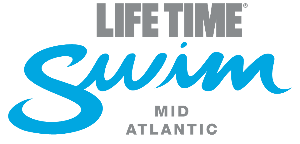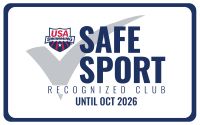Parent Education: Why children should be involved in multiple activities/sports.
Why children should be involved in multiple activities/sports....
I have had a number of parents talk to me about their swimmers and wanting them to specialize on one or two strokes or increase the number of practice days. I want to provide information from various sources about why I do not want to limit what strokes a swimmer is doing at a swim meet, why I want to limit the amount of time a swimmer maybe practicing, and why I understand if a swimmer decides to take time off from swimming to participate in another sport. -Coach Heather
THE 10 & UNDER WONDER? (from USA Swimming website)
Ranked Top 16 as a:
10 & Under Still Ranked as 17-18 11%
11-12 Still Ranked as 17-18 21%
13-14 Still Ranked as 17-18 36%
15-16 Still Ranked as 17-18 48%
Moral of the Story: A 10 & Under can survive and thrive...but 50% of the top swimmers develop AFTER Junior Year in High School. If you have age-group athlete, make sure you emphasize fun, participation in a variety of sports and activities, including unstructured play and skill development and that there is a long-term progression plan. Discourage early specialization in one sport or one event.
Our Biggest Mistake: Talent selection instead of Talent identification
While this article is written about soccer, there are many correlations to swimming.
PARENTING YOUR CHAMPION: DEVELOPING TALENT
There are three phases of sports development:
PHASE 1 : INTRODUCTION/FOUNDATION
Approximate years in phase = 5
Age of athlete: 4.5-9.6 years
In this phase, allow your child to dream big and to ensure lessons focus on fun and fundamentals. It’s important to recognize your child’s interests and provide them with opportunities and support to help him/her be successful. Try your best to focus little attention on winning and rankings as well as encouraging participate in multiple activities and sports. Now is not the time to specialize. Equally important is using this time to emphasize positive attitude and life skills and as a parent, try to keep a neutral demeanor at practices and competitions. Being overly nervous or displaying negative emotions will only send the wrong message to your child.
Parents during this phase should learn what their role is (supportive and on the sidelines) and what the role of the coach is (the technical expert and in charge of wet side matters). Avoid burnout by putting limits on practice time.
PHASE 2: REFINEMENT/TRANSITIONAL
Approximate years in phase = 4
Age of athlete: 10.6-14.6
During this phase, do things to ensure that the sport remains fun. It’s important to identify a knowledgeable coach who understands the proper training and technical progressions while working with a teenager. In this phase you can encourage your child to win, but more importantly to give his/her best effort. Leave swimming on the deck and avoid overly talking about it at home. Keep your chid’s experiences well-rounded by focusing on non-sport family activities and by emphasizing normal childhood chores and responsibilities.
In this phase, you can start to involve your child in decision making making sure you allow for recovery time physically and mentally from the sport. Continue to reinforce the principles outlined or introduced in the Foundation phase.
PHASE 3: ELITE PERFORMANCE
Approximate years in phase = NA
Age of athlete: 15.4 +
In this phase some things parents can look out for are being careful to care about your child as a person and not just as an athlete. In this phase the athlete becomes the main motivator and there is less push from the parent. Help facilitate this independence by making him or her responsible for equipment, commitments and scheduling. Emphasize good behavior and sportsmanship and to help remind your athlete that sports is a game of highs and lows and to work to stay emotionally even. Reassure and relax your child and provide them with honest feedback.
What’s important to remember that many of the same themes will resurface from phase to phase. Be supportive, know your role as a parent and reinforce life skills and good sportsmanship throughout all phases.




